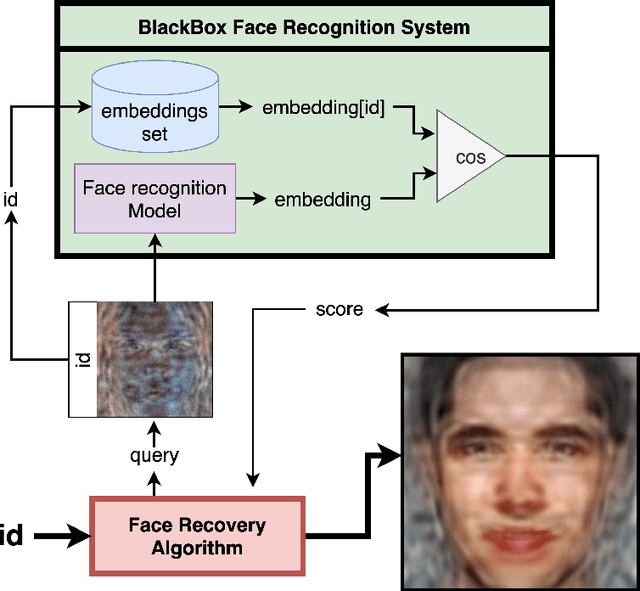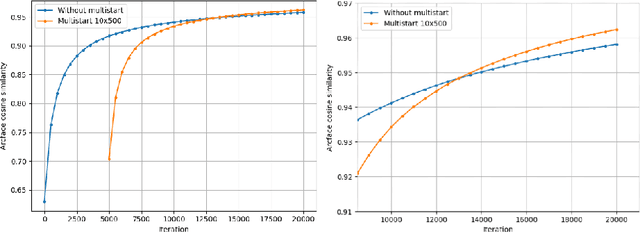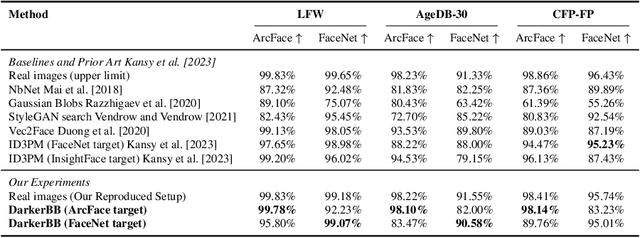Anton Razzhigaev
MindShift: Analyzing Language Models' Reactions to Psychological Prompts
Dec 18, 2025Abstract:Large language models (LLMs) hold the potential to absorb and reflect personality traits and attitudes specified by users. In our study, we investigated this potential using robust psychometric measures. We adapted the most studied test in psychological literature, namely Minnesota Multiphasic Personality Inventory (MMPI) and examined LLMs' behavior to identify traits. To asses the sensitivity of LLMs' prompts and psychological biases we created personality-oriented prompts, crafting a detailed set of personas that vary in trait intensity. This enables us to measure how well LLMs follow these roles. Our study introduces MindShift, a benchmark for evaluating LLMs' psychological adaptability. The results highlight a consistent improvement in LLMs' role perception, attributed to advancements in training datasets and alignment techniques. Additionally, we observe significant differences in responses to psychometric assessments across different model types and families, suggesting variability in their ability to emulate human-like personality traits. MindShift prompts and code for LLM evaluation will be publicly available.
SONAR-LLM: Autoregressive Transformer that Thinks in Sentence Embeddings and Speaks in Tokens
Aug 07, 2025Abstract:The recently proposed Large Concept Model (LCM) generates text by predicting a sequence of sentence-level embeddings and training with either mean-squared error or diffusion objectives. We present SONAR-LLM, a decoder-only transformer that "thinks" in the same continuous SONAR embedding space, yet is supervised through token-level cross-entropy propagated via the frozen SONAR decoder. This hybrid objective retains the semantic abstraction of LCM while eliminating its diffusion sampler and restoring a likelihood-based training signal. Across model sizes from 39M to 1.3B parameters, SONAR-LLM attains competitive generation quality. We report scaling trends, ablations, benchmark results, and release the complete training code and all pretrained checkpoints to foster reproducibility and future research.
Inverting Black-Box Face Recognition Systems via Zero-Order Optimization in Eigenface Space
Jun 11, 2025



Abstract:Reconstructing facial images from black-box recognition models poses a significant privacy threat. While many methods require access to embeddings, we address the more challenging scenario of model inversion using only similarity scores. This paper introduces DarkerBB, a novel approach that reconstructs color faces by performing zero-order optimization within a PCA-derived eigenface space. Despite this highly limited information, experiments on LFW, AgeDB-30, and CFP-FP benchmarks demonstrate that DarkerBB achieves state-of-the-art verification accuracies in the similarity-only setting, with competitive query efficiency.
Through the Looking Glass: Common Sense Consistency Evaluation of Weird Images
May 12, 2025Abstract:Measuring how real images look is a complex task in artificial intelligence research. For example, an image of a boy with a vacuum cleaner in a desert violates common sense. We introduce a novel method, which we call Through the Looking Glass (TLG), to assess image common sense consistency using Large Vision-Language Models (LVLMs) and Transformer-based encoder. By leveraging LVLMs to extract atomic facts from these images, we obtain a mix of accurate facts. We proceed by fine-tuning a compact attention-pooling classifier over encoded atomic facts. Our TLG has achieved a new state-of-the-art performance on the WHOOPS! and WEIRD datasets while leveraging a compact fine-tuning component.
I Have Covered All the Bases Here: Interpreting Reasoning Features in Large Language Models via Sparse Autoencoders
Mar 24, 2025Abstract:Large Language Models (LLMs) have achieved remarkable success in natural language processing. Recent advances have led to the developing of a new class of reasoning LLMs; for example, open-source DeepSeek-R1 has achieved state-of-the-art performance by integrating deep thinking and complex reasoning. Despite these impressive capabilities, the internal reasoning mechanisms of such models remain unexplored. In this work, we employ Sparse Autoencoders (SAEs), a method to learn a sparse decomposition of latent representations of a neural network into interpretable features, to identify features that drive reasoning in the DeepSeek-R1 series of models. First, we propose an approach to extract candidate ''reasoning features'' from SAE representations. We validate these features through empirical analysis and interpretability methods, demonstrating their direct correlation with the model's reasoning abilities. Crucially, we demonstrate that steering these features systematically enhances reasoning performance, offering the first mechanistic account of reasoning in LLMs. Code available at https://github.com/AIRI-Institute/SAE-Reasoning
Feature-Level Insights into Artificial Text Detection with Sparse Autoencoders
Mar 05, 2025Abstract:Artificial Text Detection (ATD) is becoming increasingly important with the rise of advanced Large Language Models (LLMs). Despite numerous efforts, no single algorithm performs consistently well across different types of unseen text or guarantees effective generalization to new LLMs. Interpretability plays a crucial role in achieving this goal. In this study, we enhance ATD interpretability by using Sparse Autoencoders (SAE) to extract features from Gemma-2-2b residual stream. We identify both interpretable and efficient features, analyzing their semantics and relevance through domain- and model-specific statistics, a steering approach, and manual or LLM-based interpretation. Our methods offer valuable insights into how texts from various models differ from human-written content. We show that modern LLMs have a distinct writing style, especially in information-dense domains, even though they can produce human-like outputs with personalized prompts.
LLM-Microscope: Uncovering the Hidden Role of Punctuation in Context Memory of Transformers
Feb 20, 2025Abstract:We introduce methods to quantify how Large Language Models (LLMs) encode and store contextual information, revealing that tokens often seen as minor (e.g., determiners, punctuation) carry surprisingly high context. Notably, removing these tokens -- especially stopwords, articles, and commas -- consistently degrades performance on MMLU and BABILong-4k, even if removing only irrelevant tokens. Our analysis also shows a strong correlation between contextualization and linearity, where linearity measures how closely the transformation from one layer's embeddings to the next can be approximated by a single linear mapping. These findings underscore the hidden importance of filler tokens in maintaining context. For further exploration, we present LLM-Microscope, an open-source toolkit that assesses token-level nonlinearity, evaluates contextual memory, visualizes intermediate layer contributions (via an adapted Logit Lens), and measures the intrinsic dimensionality of representations. This toolkit illuminates how seemingly trivial tokens can be critical for long-range understanding.
Universal Adversarial Attack on Aligned Multimodal LLMs
Feb 11, 2025Abstract:We propose a universal adversarial attack on multimodal Large Language Models (LLMs) that leverages a single optimized image to override alignment safeguards across diverse queries and even multiple models. By backpropagating through the vision encoder and language head, we craft a synthetic image that forces the model to respond with a targeted phrase (e.g., ''Sure, here it is'') or otherwise unsafe content-even for harmful prompts. In experiments on the SafeBench benchmark, our method achieves significantly higher attack success rates than existing baselines, including text-only universal prompts (e.g., up to 93% on certain models). We further demonstrate cross-model transferability by training on several multimodal LLMs simultaneously and testing on unseen architectures. Additionally, a multi-answer variant of our approach produces more natural-sounding (yet still malicious) responses. These findings underscore critical vulnerabilities in current multimodal alignment and call for more robust adversarial defenses. We will release code and datasets under the Apache-2.0 license. Warning: some content generated by Multimodal LLMs in this paper may be offensive to some readers.
Your Transformer is Secretly Linear
May 19, 2024



Abstract:This paper reveals a novel linear characteristic exclusive to transformer decoders, including models such as GPT, LLaMA, OPT, BLOOM and others. We analyze embedding transformations between sequential layers, uncovering a near-perfect linear relationship (Procrustes similarity score of 0.99). However, linearity decreases when the residual component is removed due to a consistently low output norm of the transformer layer. Our experiments show that removing or linearly approximating some of the most linear blocks of transformers does not affect significantly the loss or model performance. Moreover, in our pretraining experiments on smaller models we introduce a cosine-similarity-based regularization, aimed at reducing layer linearity. This regularization improves performance metrics on benchmarks like Tiny Stories and SuperGLUE and as well successfully decreases the linearity of the models. This study challenges the existing understanding of transformer architectures, suggesting that their operation may be more linear than previously assumed.
OmniFusion Technical Report
Apr 09, 2024



Abstract:Last year, multimodal architectures served up a revolution in AI-based approaches and solutions, extending the capabilities of large language models (LLM). We propose an \textit{OmniFusion} model based on a pretrained LLM and adapters for visual modality. We evaluated and compared several architecture design principles for better text and visual data coupling: MLP and transformer adapters, various CLIP ViT-based encoders (SigLIP, InternVIT, etc.), and their fusing approach, image encoding method (whole image or tiles encoding) and two 7B LLMs (the proprietary one and open-source Mistral). Experiments on 8 visual-language benchmarks show the top score for the best OmniFusion setup in terms of different VQA tasks in comparison with open-source LLaVA-like solutions: VizWiz, Pope, MM-Vet, ScienceQA, MMBench, TextVQA, VQAv2, MMMU. We also propose a variety of situations, where OmniFusion provides highly-detailed answers in different domains: housekeeping, sightseeing, culture, medicine, handwritten and scanned equations recognition, etc. Mistral-based OmniFusion model is an open-source solution with weights, training and inference scripts available at https://github.com/AIRI-Institute/OmniFusion.
 Add to Chrome
Add to Chrome Add to Firefox
Add to Firefox Add to Edge
Add to Edge